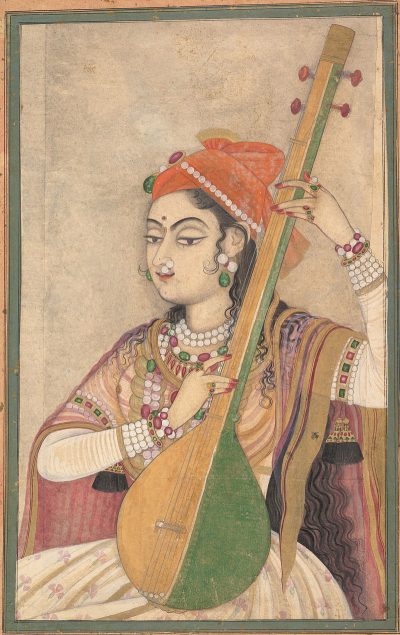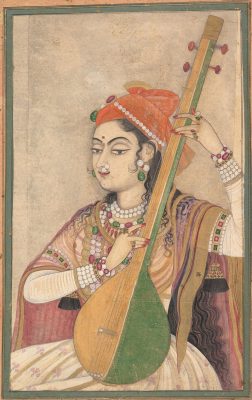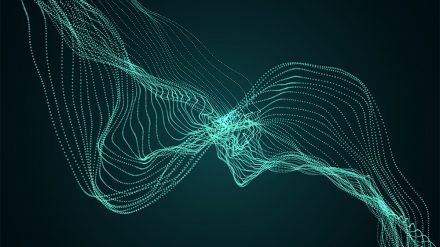Parts 1, 2, and 3 of 8 Parts – Source: Wikipedia
Video credit: WildFilmsIndia
The music of India includes multiple varieties of classical music, folk music, filmi music, Indian pop and Indian rock. India’s classical music tradition, including Hindustani music and Carnatic music, has a history spanning millennia and developed over several areas. Music in India began as an integral part of socio-religious life.
History
The 30,000 years old Paleolithic and N cave paintings at the UNESCO world heritage site at Bhimbetka rock shelters in Madhya Pradesh shows music instruments and dance. The Mesolithic and chalcolithic cave art of Bhimbhetka illustrates various musical instruments such as harp, drums, gongs, daf, etc.
Dancing Girl sculpture (2500 BCE) was found from the Indus Valley Civilization (IVC) site. There are paintings from this era on pottery of a man with a dhol hanging from his neck and a woman holding a drum under her left arm.
Vedas (c. 1500 – c. 800 BCE Vedic period) document rituals with performing arts and play. For example, Shatapatha Brahmana (~800–700 BCE) has verses in chapter 13.2 written in the form of a play between two actors. Tala or taal is an ancient music concept traceable to Vedic era texts of Hinduism, such as the Samaveda and methods for singing the Vedic hymns.
Smriti (500 BCE to 100 BCE ) post-vedic Hindu texts include Valmiki‘s Ramayana (500 BCE to 100 BCE) which mentions dance and music (dance by Apsaras such Urvashi, Rambha, Menaka, Tilottama Panchāpsaras and Ravana‘s wives excelling in nrityageeta or “singing and dancing” and nritavaditra or “playing musical instruments”), music and singing by Gandharvas, several string instruments (vina, tantri, vipanci and vallaki similar to veena), wind instruments (shanka, venu and venugana – likely a mouth organ made by tying several flutes together;
Solo table magic played by Bickram Ghosh
Also raga (including kaushika such as raag kaushik dhwani), vocal registers drag ( seven svara or sur, ana or ekashurti note, murchana the regulated rise and fall of voice in matra and tripa-ramana, three-fold teen taal laya such as drut or quick, madhya or middle, and vilambit or slow), poetry recitation in Bala Kanda and also in Uttara Kanda by Louv and Kusha in marga style.
Under the Khiljis, there were concerts and competitions between Hindustani and Carnatic musicians. Madhava Kandali, 14th century Assamese poet and writer of Saptakanda Ramayana, lists several instruments in his version of “Ramayana”, such as mardala, khumuchi, bhemachi, dagar, gratal, ramtal, tabal, jhajhar, jinjiri, bheri mahari, tokari, dosari, kendara, dotara, vina, rudra-vipanchi, etc. (meaning that these instruments existed since his time in 14th century or earlier). The Indian system of notation is perhaps the world’s oldest and most elaborate.
Classical Music
The two main traditions of Indian classical music are Carnatic music, which is found predominantly in the peninsular regions, and Hindustani music, which is found in the northern, eastern and central regions.
The basic concepts of this music include the alankar (ornamentations raga (melodies improvised from basic grammar), shruti), (microtones), swaras (notes), and tala (rhythmic patterns used in percussion). Its tonal system divides the octave into 22 segments called shrutis, not all equal but each roughly equal to a quarter of a whole tone of the Western music.






